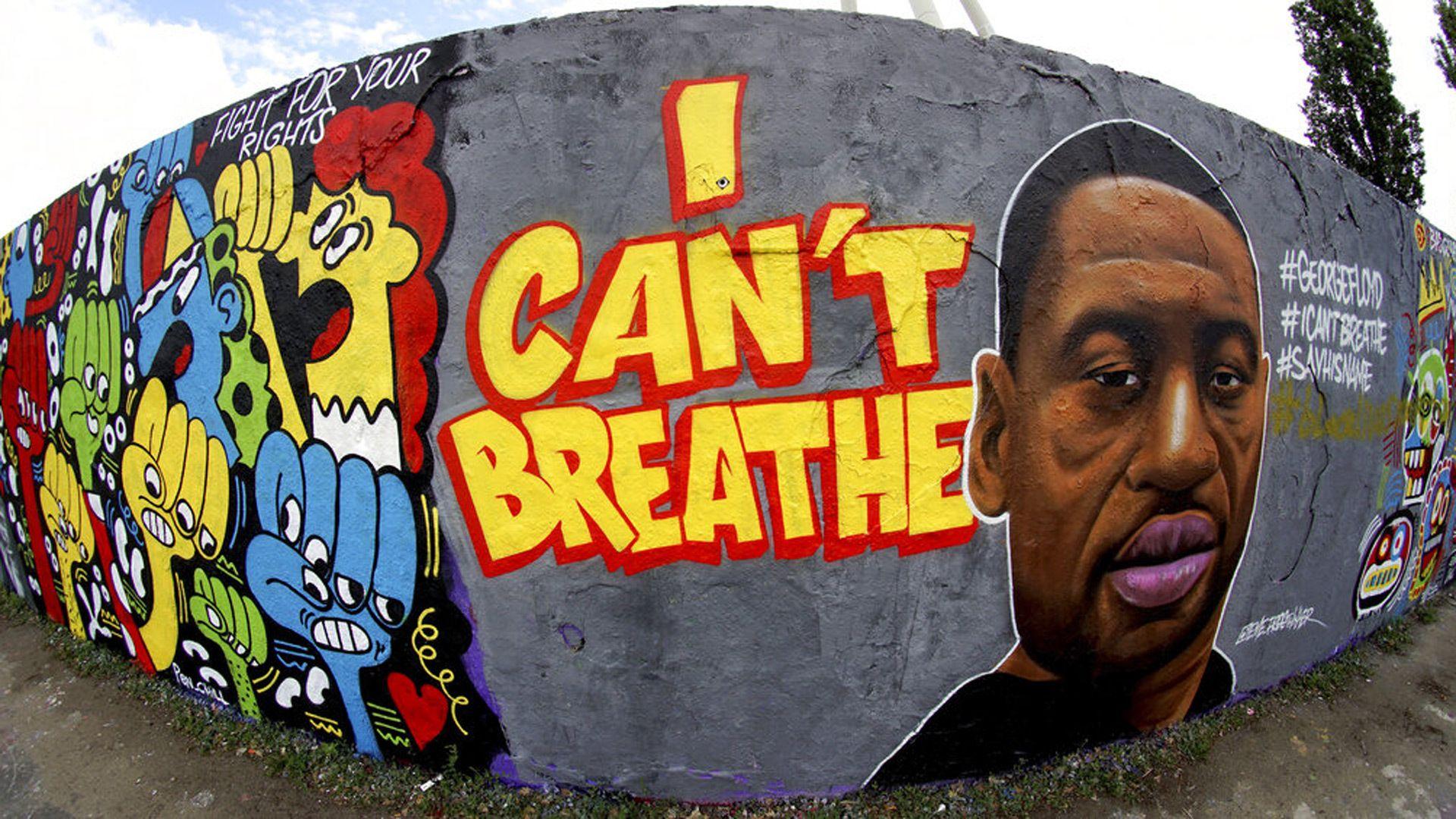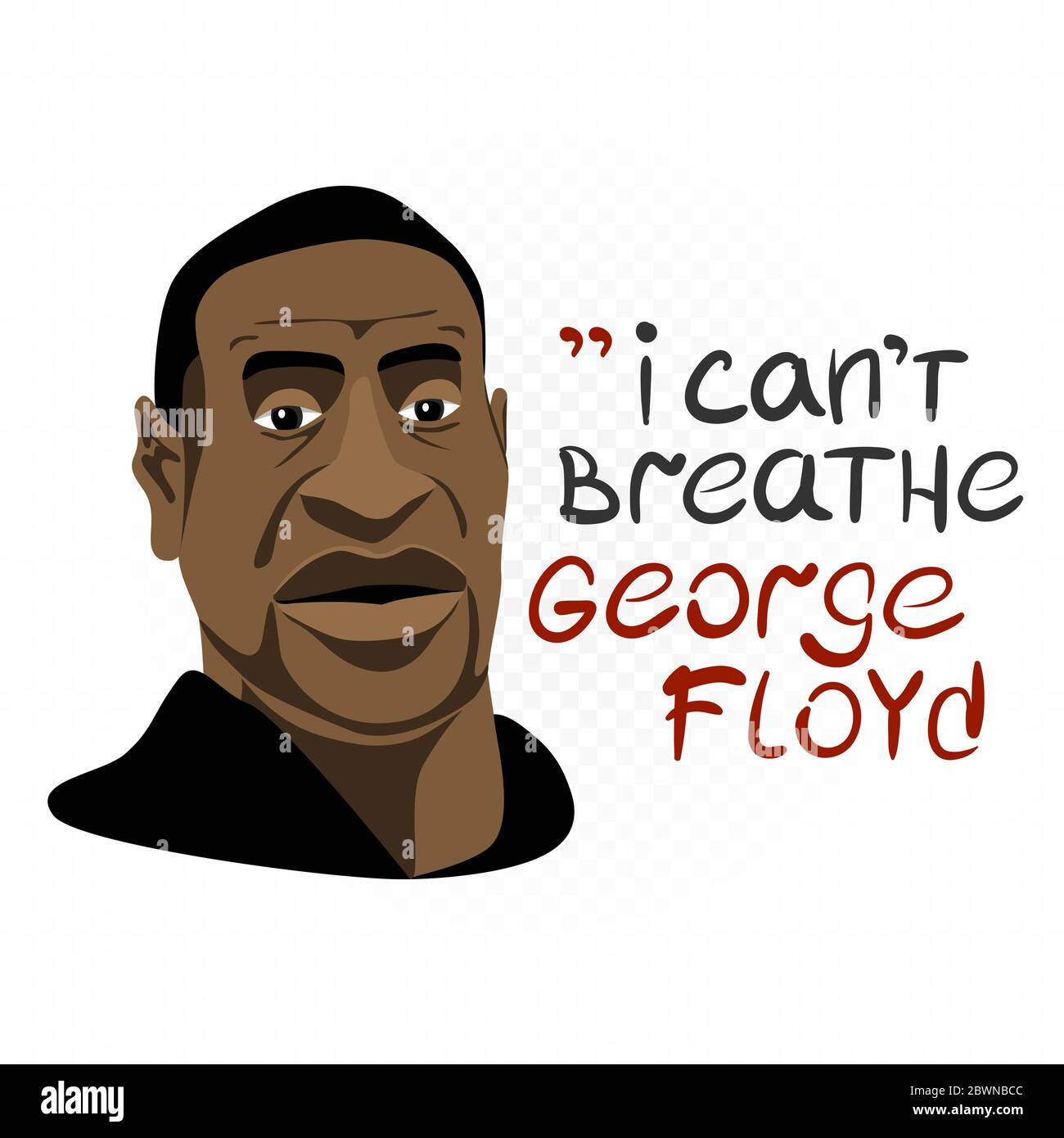George Floyd's Last Words: Understanding The Impact Of "I Can't See"
These words, uttered during a harrowing encounter that led to his untimely death, have become a powerful symbol for millions around the globe. The phrase "I can't see" is not just a reflection of physical distress but also represents the broader struggles faced by marginalized communities who feel unseen and unheard in their fight for equality and justice. As the world grapples with these issues, understanding the context and meaning behind these words has become more important than ever.
George Floyd's death sparked a global movement, reigniting conversations about race, police brutality, and systemic inequality. His words, "I can't see," have been etched into history, serving as a catalyst for change and a rallying cry for those demanding justice. These words have transcended their original context, becoming a universal expression of frustration and despair among those who feel invisible in the face of systemic oppression. By exploring the impact of these words, we can better understand the broader societal challenges they highlight and work toward meaningful solutions.
The phrase "I can't see" carries a dual meaning, reflecting both George Floyd's physical suffering and the metaphorical struggles of countless individuals who feel marginalized and overlooked. This duality has made his words a poignant symbol of the fight for justice and equality. As we delve deeper into the story behind these words, we uncover the human experience of George Floyd and the societal implications of his tragic death. Through this exploration, we aim to shed light on the ongoing struggle for racial justice and the urgent need for systemic change.
Read also:Muezza Cat Price Everything You Need To Know Before Bringing One Home
Table of Contents
- Biography of George Floyd
- Why Did George Floyd Say "I Can't See"?
- What Is the Impact of George Floyd's Words?
- Personal Details and Bio Data of George Floyd
- How Did George Floyd's Death Change the World?
- What Steps Have Been Taken Toward Justice?
- How Did Communities Respond to George Floyd's Death?
- Is the Movement Inspired by George Floyd Still Relevant?
- What Lessons Can We Learn from George Floyd's Story?
- What Does the Future Hold for Racial Justice?
Biography of George Floyd
George Floyd was more than just a name in the headlines; he was a son, a father, and a friend whose life was tragically cut short. To fully understand the weight of his final words, "I can't see," it is essential to explore his life story and the circumstances that led to his untimely death. Floyd was born on October 14, 1973, in Fayetteville, North Carolina, and grew up in Houston, Texas. He was known for his warm personality, love for sports, and dedication to his community. Despite facing numerous challenges, Floyd aspired to make a positive impact on those around him.
Personal Details and Bio Data of George Floyd
| Full Name | George Perry Floyd Jr. |
|---|---|
| Date of Birth | October 14, 1973 |
| Place of Birth | Fayetteville, North Carolina, USA |
| Date of Death | May 25, 2020 |
| Place of Death | Minneapolis, Minnesota, USA |
| Occupation | Truck driver, security guard |
| Family | Two children |
| Notable Achievements | Active member of the Houston hip-hop scene, community advocate |
Why Did George Floyd Say "I Can't See"?
On May 25, 2020, George Floyd's life was tragically altered during an encounter with law enforcement in Minneapolis, Minnesota. During the incident, Floyd repeatedly expressed his physical distress, saying, "I can't breathe," and later, "I can't see." These words were a desperate plea for help as he lay pinned under the knee of a police officer. The phrase "I can't see" not only reflected his physical suffering but also symbolized the broader struggles of marginalized communities who feel invisible in the face of systemic injustice. Understanding the context of this moment is crucial to comprehending its profound impact.
What Was Happening During the Incident?
During the encounter, George Floyd was handcuffed and pinned to the ground by a police officer. Witnesses reported that Floyd repeatedly expressed his inability to breathe and see, pleading for mercy. The phrase "I can't see" underscores the severity of his physical condition and highlights the inhumane treatment he endured. This moment has since become a symbol of the systemic issues that plague law enforcement and society at large, sparking widespread outrage and calls for reform.
What Is the Impact of George Floyd's Words?
The impact of George Floyd's words, "I can't see," extends far beyond the tragic incident itself. These words have become a rallying cry for the Black Lives Matter movement and a symbol of the fight against racial injustice. They have inspired millions to take to the streets, demanding accountability and systemic change. Floyd's final words have also prompted global conversations about race, equality, and the need for reform in law enforcement. By examining the ripple effects of these words, we can better understand their lasting significance.
How Did the World React to George Floyd's Words?
In the aftermath of George Floyd's death, his words resonated deeply with people around the world. Protests erupted in cities across the globe, with demonstrators chanting "I can't breathe" and "I can't see" as they called for justice. Social media platforms were flooded with tributes and calls to action, amplifying the message of the Black Lives Matter movement. The phrase "I can't see" became a symbol of the invisible struggles faced by marginalized communities, galvanizing individuals to join the fight for equality and justice.
What Role Did Media Play in Spreading Awareness?
The media played a pivotal role in amplifying George Floyd's story and the significance of his final words. News outlets and social media platforms brought global attention to the incident, ensuring that Floyd's words, "I can't see," reached millions of people. This widespread coverage helped to spark a global movement, inspiring individuals and organizations to take action. By shining a light on Floyd's tragic death, the media contributed to a broader understanding of the systemic issues at play and the urgent need for reform.
Read also:Oprah Winfrey Hair Unveiling The Secrets Behind Her Iconic Looks
How Did George Floyd's Death Change the World?
George Floyd's death marked a turning point in the fight for racial justice, sparking a global movement that continues to drive change today. His final words, "I can't see," have become a powerful symbol of the struggle for equality and justice. In the wake of his death, governments, organizations, and individuals have taken steps to address systemic racism and police brutality. From policy reforms to grassroots activism, Floyd's legacy has inspired meaningful action and progress.
What Steps Have Been Taken Toward Justice?
In response to George Floyd's death, numerous steps have been taken to address systemic racism and police brutality. Lawmakers have introduced legislation aimed at reforming law enforcement practices, while organizations have implemented diversity and inclusion initiatives. Additionally, individuals have taken to social media and community activism to demand accountability and change. These efforts reflect a collective commitment to ensuring that George Floyd's words, "I can't see," serve as a catalyst for meaningful reform and progress.
How Did Communities Respond to George Floyd's Death?
Communities around the world responded to George Floyd's death with an outpouring of grief, anger, and determination. Vigils, protests, and memorials were organized to honor his memory and demand justice. His final words, "I can't see," became a rallying cry for those seeking change, uniting people from diverse backgrounds in the fight for racial justice. This collective response underscores the profound impact of Floyd's death and the urgent need for systemic reform.
What Role Did Grassroots Movements Play?
Grassroots movements played a crucial role in amplifying George Floyd's story and advocating for change. Local organizations and activists organized protests, fundraisers, and educational initiatives to raise awareness about systemic racism and police brutality. These efforts helped to sustain momentum for the Black Lives Matter movement, ensuring that Floyd's words, "I can't see," continued to resonate and inspire action. By empowering communities to take a stand, grassroots movements have been instrumental in driving progress.
Is the Movement Inspired by George Floyd Still Relevant?
Yes, the movement inspired by George Floyd remains highly relevant today. His final words, "I can't see," continue to serve as a powerful reminder of the ongoing struggle for racial justice and equality. While significant progress has been made, systemic issues persist, underscoring the need for continued advocacy and reform. By keeping Floyd's legacy alive, the movement ensures that his words remain a catalyst for change and a call to action for future generations.
What Challenges Remain in the Fight for Racial Justice?
Despite the progress made since George Floyd's death, numerous challenges remain in the fight for racial justice. Systemic racism, police brutality, and inequality continue to affect marginalized communities worldwide. Addressing these issues requires sustained effort and collaboration across governments, organizations, and individuals. By reflecting on Floyd's words, "I can't see," we are reminded of the invisible struggles faced by countless individuals and the urgent need for systemic reform.
What Lessons Can We Learn from George Floyd's Story?
George Floyd's story offers profound lessons about the importance of empathy, accountability, and systemic change. His final words, "I can't see," highlight the invisible struggles faced by marginalized communities and underscore the need for greater awareness and action. By learning from Floyd's story, we can work toward a more just and equitable society, ensuring that his legacy continues to inspire meaningful progress.
What Does the Future Hold for Racial Justice?
The future of racial justice depends on our collective commitment to addressing systemic issues and fostering equality. George Floyd's words, "I can't see," serve as a powerful reminder of the work that remains to be done. By continuing to advocate for change and hold institutions accountable, we can create a future where everyone is seen, heard, and valued. Floyd's legacy will undoubtedly continue to inspire generations to come, driving progress and transformation in the fight for justice.
Unveiling The Story Behind Ahna's Facial Fracture: A Journey Of Resilience
Noah And Lori TikTok: Discover Their Viral Journey And Inspiring Content
Understanding The Charles And Alyssa Break Up: What Happened And Why?

Floyd Wallpapers Top Free Floyd Backgrounds

floyd concept Stock Vector Images Alamy